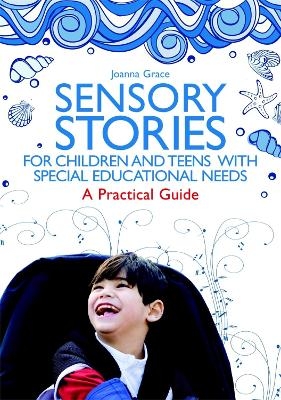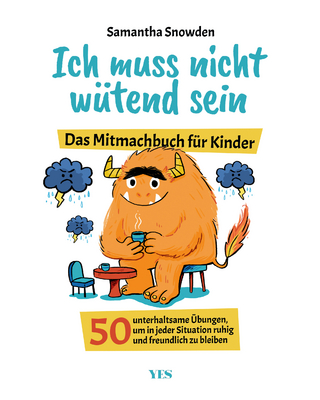
Sensory Stories for Children and Teens with Special Educational Needs
Jessica Kingsley Publishers (Verlag)
978-1-84905-484-3 (ISBN)
Sensory Stories are short stories of a few lines which are brought to life through a selection of meaningful sensory experiences. They are particularly beneficial for students with Sensory Processing Disorder (SPD), profound and multiple learning difficulties (PMLD), autism spectrum disorders (ASD) and other special educational needs (SEN).
For children with PMLD, Sensory Stories can open up new avenues for communication and inclusive learning. For students with SPD and ASD, they offer a fun way of encountering sensory experiences and triggers in a safe, repetitive way, which over time can help to reduce associated anxieties. This accessible guide offers teachers, other professionals working with students with SEN and parents with a complete step-by-step guide to creating and using Sensory Stories effectively. Aiming to make Sensory Stories affordable and accessible to schools and parents alike by using everyday items found in the classroom and home, Joanna Grace provides original, ready-to-use Sensory Stories with accompanying lesson plans, games and activities and adaptations for different abilities and diagnoses.
Written by an experienced SEN consultant and sensory learning specialist, this is unique and essential reading for teachers, other professionals and parents wishing to introduce the many benefits of multi-sensory storytelling to children in their care.
Joanna Grace is a consultant and author of educational materials for students with special educational needs. She has spent her career working with children with special educational needs both in mainstream and special school settings, and has also fostered a child with special needs on a short break basis. She has been commissioned to write for a number of high profile organisations, including BookTrust, Teach First, Worldstories, Oxfam, Amnesty International and the Holocaust Memorial Day Trust. She regularly trains professionals in how to facilitate Sensory Stories for students with special educational needs and disabilities. She speaks regularly about sensory learning at educational conferences. Joanna's website can be found at www.thesensoryprojects.co.uk and she tweets as @jo3grace.
Introduction. What is a Sensory Story? How I discovered Sensory Stories. About this Book. Part I: Background. 1. The importance of sensory stimulation. Sensory stimulation and children with physical or sensory impairments. Our senses - the famous five, plus two. What makes for strong sensory stimuli? 2. The Significance of Narrative. Why combine sensory stimulation and storytelling? What can you say in ten sentences? Part 2: Sharing Sensory Stories with Individuals. 3. How to share a sensory story. Maintaining consistency when telling sensory stories. Tips for consistent sharing of sensory stories. 4. PMLD, labelling and the role sensory stories have to play in inclusion. Sharing sensory stories with individuals with profound and multiple learning disabilities (PMLD). Confidence in the world. 5. Sensory Processing Disorder (SPD). Sensory processing disorder and sensory stories. Sensory stories as a way of introducing and becoming accustomed to stimuli. Sensory stories as a way to rehearse responses to stimuli. Sensory stories' role in addressing eating difficulties. 6. Sensory stories and... . ...individuals with Autism Spectrum Disorder (ASD). ...individuals with Attention Deficit Hyperactivity Disorder (ADHD). ...individuals with sensory impairments. ...individuals with communication difficulties. ...individuals with memory difficulties. ...individuals with physical impairments. ...individuals with mental health difficulties. 7. Supporting learning and development. Understanding vocabulary. Concentration, learning and memory. Inspiring interaction. Part 3: Using Sensory Stories to Form the Bases of Group Sessions. 8. Structuring sessions to challenge and include a range of learners. Bookending. Building. Calming. Preparing. Reinforcing memories. Tasks to challenge higher ability learners. Part 4: Assessment. 9. Why Asses? Because it is part of your role. Because it can help you reflect on what you are doing. To celebrate individuals' achievements. To justify the use of sensory stories. 10. Assessment method suggestions. a) P level questions. b) Getting to know you questions. c) Reactions. d) Target behaviour. e) Multiple targets. f) Responses to different stories. g) Responses to particular senses. Part 5: The Sensory Stoies and Associated Resources. 11. About the Sensory Stories and Associated Resources. The Selkie Wife. The Story. About the Story. Resourcing the Stimuli. Facilitating the Stimuli. Exploration Activities. Creative Activities. Discovery Activities. Six Lesson Plans for The Selkie Wife Story. Lesson One: Hiding and Finding. Lesson Two: Different Movements. Lesson Three: Mini Sequences. Lesson Four: Story Sequence Development. Lesson Five: Evaluating and Improving. Lesson Six: Rehearsal and Performance. Seasoned with Spice. The Story. About the Story. Resourcing the Stimuli. Facilitating the Stimuli. Exploration Activities. Creative Activities. Discovery Activities. Six Lesson Plans for Seasoned with Spice Story. Lesson One: Planting Herbs and Spices. Lesson Two: Stir Fry Vegetables. Lesson Three: Fruit Smoothies. Lesson Four: Face Plates. Lesson Five: Herby Sandwich. Lesson Six: Fudge Frolics.Two People Made Me. The Story. About the Story. Resourcing the Stimuli. Facilitating the Stimuli. Exploration Activities. Creative Activities. Discovery Activities. Six Lesson Plans for Two People Made Me Story. Lesson One: Where Do Babies Grow? Lesson Two: How Do Babies Grow? Lesson Three: How Does a Baby Get Food? Lesson Four: What Body Parts Does a Baby Have? Lesson Five: Does a Baby Have the Same Things Inside it as we do? Lesson Six: What Happens Next? To the Centre of the Earth! The Story. About the Story. Resourcing the Stimuli. Facilitating the Stimuli. Exploration Activities. Creative Activities. Discovery Activities. Six Lesson Plans for To the Centre of the Earth! Story. Lesson One: Lesson Two: Water Experiment. Lesson Three: Describing Materials. Lesson Four: Student Choice. Lesson Five: Temperature. Lesson Six: Magnetism. The Forest of Thorns. The Story. About the Story. Resourcing the Stimuli. Facilitating the Stimuli. Exploration Activities. Creative Activities. Discovery Activities. Six Lesson Plans for The Forest of Thorns Story. Lesson One: Exploring the Story. Lesson Two: Recognising the Retelling. Lesson Three: What if? Lesson Four: Dreams. Lesson Five: Read, Recite and Act. Lesson Six: My Favourite Part. References. Index.
| Erscheint lt. Verlag | 21.10.2014 |
|---|---|
| Verlagsort | London |
| Sprache | englisch |
| Maße | 173 x 245 mm |
| Gewicht | 475 g |
| Themenwelt | Sachbuch/Ratgeber ► Gesundheit / Leben / Psychologie ► Familie / Erziehung |
| Sozialwissenschaften ► Pädagogik ► Sonder-, Heil- und Förderpädagogik | |
| ISBN-10 | 1-84905-484-3 / 1849054843 |
| ISBN-13 | 978-1-84905-484-3 / 9781849054843 |
| Zustand | Neuware |
| Haben Sie eine Frage zum Produkt? |
aus dem Bereich


